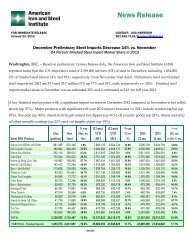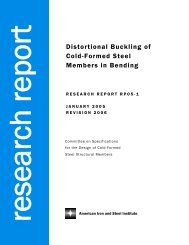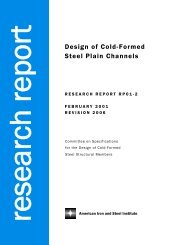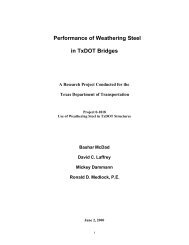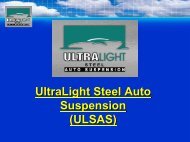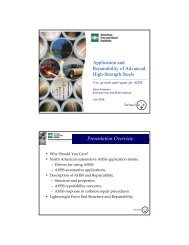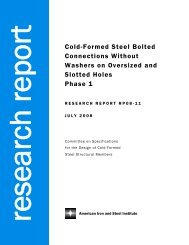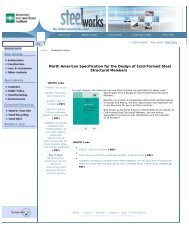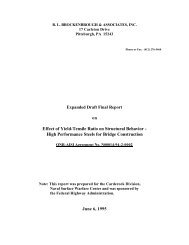Environmental Life Cycle Assessment of Southern Yellow Pine ...
Environmental Life Cycle Assessment of Southern Yellow Pine ...
Environmental Life Cycle Assessment of Southern Yellow Pine ...
Create successful ePaper yourself
Turn your PDF publications into a flip-book with our unique Google optimized e-Paper software.
EXECUTIVE SUMMARY<br />
Figure 4. A site in Alabama showing a patchwork <strong>of</strong> clear-‐cuts. The photo on the left was taken in January <br />
1999; the photo on the right in May 2007. Lat/Lon: 30°38'12.07"N, 85°47'35.52"W. <br />
Of the managed forests considered in the study scope that are producing <strong>Southern</strong> yellow pine, 97% <br />
are 40 years old or less; 75% are less than 20 years old. This indicates that the majority <strong>of</strong> wood <br />
produced in the region is from even-‐aged forestry, on rotation cycles less than 40 years. These <br />
practices impact two types <strong>of</strong> forest biome in the Southeast – “Temperate Broadleaf and Mixed <br />
Forest,” and “Temperate Coniferous Forest”. <br />
The managed forests in this region are maintained in an altered state compared to a mature forest, <br />
resulting in a set <strong>of</strong> land use ecological impacts that have altered plant communities in both <strong>of</strong> these <br />
biomes. These forest management practices have threatened the long-‐term persistence <strong>of</strong> many <br />
species, and a large part <strong>of</strong> the biomes has been converted to agriculture or plantation-‐based <br />
forestry. Longleaf-‐slash forests are currently on the decline across the entire region, as a result <strong>of</strong> fire <br />
suppression and conversion <strong>of</strong> forests to faster-‐growing loblolly-‐shortleaf forests. 23<br />
All <strong>of</strong> these impacts contribute to a biome that is disturbed across large areas <strong>of</strong> forest. Based on the <br />
study findings, the plantation style forestry in this region creates a landscape that is, on average, <br />
between 40% and 60% disturbed, when compared to a mature forest. <br />
1.5.2.1.2 Wetland Biome Disturbance <br />
As a result <strong>of</strong> forestry in the Southeastern US, a substantial number <strong>of</strong> wetlands in the Southeast <br />
have been disturbed since the baseline condition in the late 1880s. The hardwood species that can be <br />
planted and harvested in wetland areas are significantly less productive than <strong>Southern</strong> yellow pine <br />
species, and conversion from wetland forest to managed pine plantations accounts for most <strong>of</strong> the <br />
historic changes in the freshwater forested category <strong>of</strong> wetland in the Southeastern US. 24 Many <br />
wetlands have been drained (“de-‐watered”) and fully converted to harvestable forestland, resulting <br />
in full disturbance to the wetland biome over large areas. <br />
23 Forest Resources <strong>of</strong> the United States. United States Forest Service. 2007. <br />
24 U.S. Fish and Wildlife Service, Fisheries and Habitat Conservation: Status and Trends <strong>of</strong> Wetlands in the Conterminous <br />
United States, 1987-‐1998. (Report to Congress). T.E. Dahl. <br />
April 2013 | ©SCS Global Services <br />
ES-‐ 14



